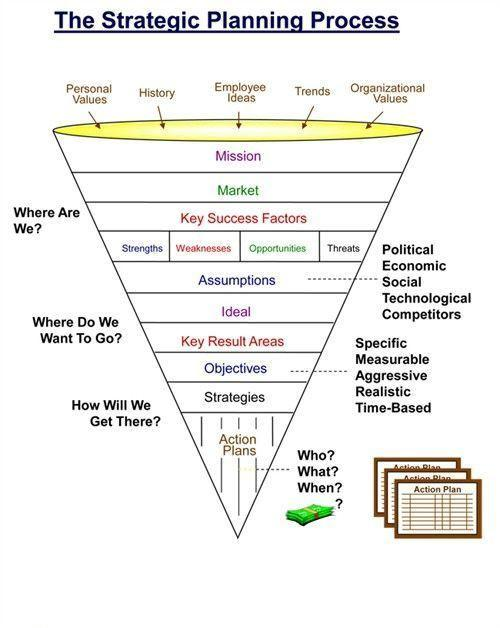Strategic planning is crucial for any organization seeking to reach its stated vision and goals. It is the process of defining an organization’s direction and making decisions on allocating its resources to pursue this direction. In this article, we will discuss the essential steps involved in the strategic planning process.
Step 1: Assess the Current Situation The first step in strategic planning is to assess the current situation. This involves gathering data and information on the organization’s current performance, internal and external environment, and competitive position. This information determines the organization’s strengths, weaknesses, opportunities, and threats (SWOT analysis). This step provides a basis for setting future goals and objectives.
Step 2: Define the Vision and Mission The vision and mission statements serve as a roadmap for the organization’s future. The vision statement defines where the organization wants to be in the future, while the mission statement explains why it exists and what it intends to achieve. These statements should be concise, inspiring, and aligned with the organization’s values.
Step 3: Set Objectives and Goals The next step is to set specific, measurable, attainable, relevant, and time-bound (SMART) objectives and goals. These should align with the organization’s vision and mission and be consistent with the SWOT analysis results. Objectives and goals should be set for all areas of the organization, including financial, customer, internal processes, and learning and growth.
Step 4: Develop Strategies Once the objectives and goals are set, the next step is to develop strategies to achieve them. Strategies should address the organization’s strengths, weaknesses, opportunities, and threats. They should be innovative, flexible, and aligned with the organization’s vision and mission.
Step 5: Implement the Plan The implementation of the strategic plan is a crucial step. It involves allocating resources, establishing timelines, and assigning responsibilities. Effective communication and involvement of all stakeholders are key to the plan’s successful implementation.
Step 6: Monitor and Evaluate Progress The final step in the strategic planning process is to monitor and evaluate progress. This involves tracking the organization’s performance against its objectives and goals and making necessary adjustments. Regular plan reviews should be conducted to ensure it remains relevant and aligned with the organization’s vision and mission.
In conclusion, the strategic planning process is a critical component of an organization’s success. It helps organizations to define their direction, allocate resources, and achieve their goals. By following the steps outlined in this article, organizations can ensure that their strategic planning process is effective and leads to the desired outcomes.
